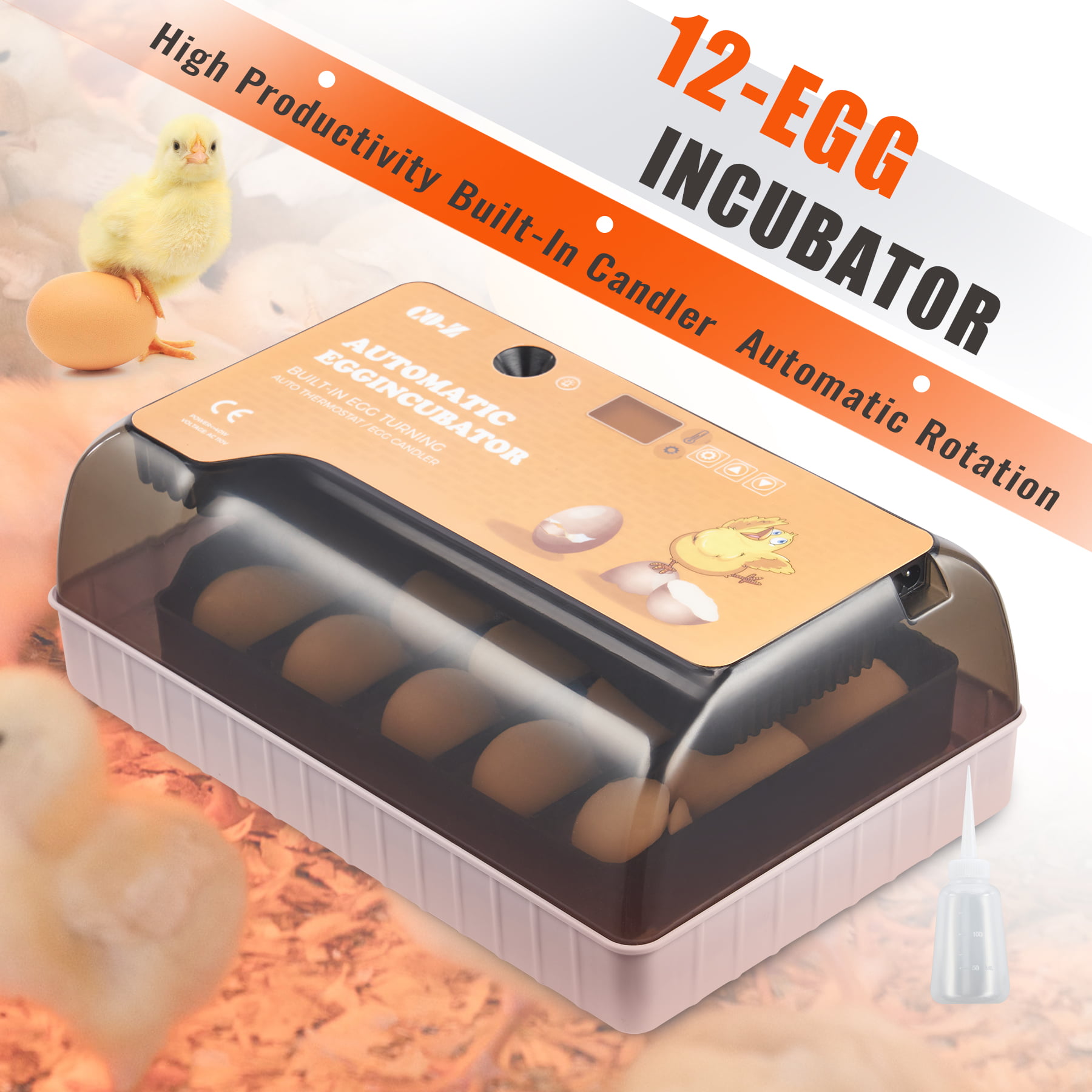

Overcrowding can also be a problem because turkey poults are twice as large as chicks and grow fast - they need plenty of room. Remove the chicks once the poults are eating and drinking well. When the poults hatch the chicks will be experienced with eating and drinking in the brooder, and the poults will follow them around and learn from the chicks. We hatch some chicken eggs with the turkey eggs the chicks will hatch about a week before the poults. Watch for any poults that are lagging behind as they start growing. Keep an eye open for the one that gets pushed away from the feed or water, or hangs back while the others are eating.
Best egg incubator for turkeys full#
“Starving out” is a common problem with turkeys they will literally starve to death right in front of a full feeder. It’s important to keep a close eye on them and make sure they’re eating and drinking. Shipping is hard on them because of the temperature extremes, lack of water and food and being bounced around. The first two weeks or so are crucial, especially for the shipped poults. For shipped poults, inspect each poult and dip their beaks in water as you put them in the brooder so they learn to drink. If you have hatched the poults, make sure they are dry before you take them out of the incubator. Raise the heat lamp once a week until they don’t need it. If they are huddled under the heat lamp, they are too cold, and if they are on the outer edges of the brooder, it’s too hot. We don’t even check the temperature in ours we let the poults tell us what the temperature should be. Start with the brooder temperature at 95 to 98 degrees. You need to have everything set up and warmed up for the poults before they are ready to go into the brooder. Whether you hatch poults in an incubator or have them shipped to you, getting them off to a good start is important. Coccidiosis can be a major problem for poults raised on the ground if other poultry has occupied the area before. We always put a fresh layer of sand down for each group to help prevent soil-borne diseases.
Best egg incubator for turkeys plus#
The maternity area is covered to keep out the rain, plus it keeps the hen and her poults in a smaller area and closer together. After the hen hatches her brood, we move them all to a “maternity” pen for at least the first two months. Many times the hens will seek a quiet place to make a nest, such as a bush or brush pile, which makes them easy targets for predators, especially at night. It’s best to have your hen sit in a secure area. This is a big advantage if you have limited brooder space or want to keep the poults from different matings separated. You can control the number of eggs you set and when they will hatch when incubating eggs in a machine. Another disadvantage is that the turkey hens will lay fewer eggs when a hen goes broody she stops laying eggs. Of course, some hens are better mothers than others, but it’s best to be prepared. The biggest disadvantages are that you’ll loose some poults - the hen may step on them or they may get chilled. They will also tend to integrate into the flock quicker as they have learned the skills from the hen. Two of the biggest advantages of natural incubation are that the poults hatched by a turkey hen will be more inclined to sit and raise poults themselves, and we think the hen-raised poults are overall stronger.


We use both natural and artificial incubation and have found that each has advantages and disadvantages. When we stop turning the eggs, we add a humidity sponge which brings the humidity near the 60 to 70 percent range.) Our hatch rates are about 90 percent year after year. (For those who use a GQF Sportsman, ours runs about 99.6 to 100 degrees Fahrenheit and 30 to 40 percent humidity during incubation. It’s best to start with chicken eggs until you have your incubator set up correctly and the chicken eggs are hatching well. With the number of incubators available to use, it’s best to start with the instructions for your incubator and make adjustments as necessary. Turkey eggs take approximately 28 days to hatch (stop turning them on day 25 of incubation). Every year we have people contact us at S and S Poultry saying, “Help, my turkeys aren’t doing well.” It’s easy to get attached to the little guys and always sad when things don’t go as planned, so we decided to share what works for us. Spring is right around the corner (hopefully), so we thought this would be a good time to write about hatching and raising turkey poults. Homemade Cheese Recipes: Cheese Making Articles.Sustainable Farming & Agriculture Articles.Power Equipment Articles - Lawn and Garden Equipment.Raising Ducks and Geese: Articles & Ideas.Homesteading Poultry - Chicken, Turkey, Ducks Archives.


 0 kommentar(er)
0 kommentar(er)
